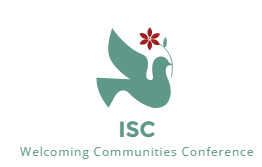Our country has long been a beacon of hope and opportunity for people from around the world. Today, 41.3 million foreign-born residents live in the United States and are contributing to the vitality of our country and their communities. This includes the over 3 million refugees who have resettled here since 1975 from countries that span the globe. These immigrants and refugees are adding much to our country’s social and cultural fabric, and are also critical to our country’s continued economic prosperity. While 13 percent of the overall population is foreign-born, foreign-born workers represent close to 17 percent of the current U.S. labor force. Over the next 20 years, immigrants and their children will account for 85 percent of the net growth in the U.S. labor force. Immigrants are entrepreneurial, starting 28 percent of all new businesses.
Our success as a nation of immigrants is rooted in our historic success in integrating newcomers into the social, cultural, and economic fabric of our country. Integration is a dynamic two-way process that brings together newcomers and the long-time residents of communities into which they settle (“receiving communities”) to foster greater understanding, promote inclusiveness, speed economic success, and build secure, vibrant, and cohesive communities.
The current Administration has studied immigrant and refugee integration efforts, maintained dialogue with stakeholders, and applied best practices and key principles, particularly those inspired by the “welcoming communities” movement. Welcoming communities are cities, counties, or towns that strive to bring immigrants and refugees and native-born residents together to create a positive environment for all. The Administration has identified three integration pillars — civic, economic, and linguistic integration — that have been its focus over the past six years. Numerous agencies have worked to enhance opportunities for new Americans across each of these pillars through programs that engage local immigrant populations and provide them with access to training around language needs, career development, and support services. Toward the end of 2014, President Obama created a formal interagency body, the White House Task Force on New Americans, which aims to further strengthen the federal government’s integration efforts by making them more strategic and deliberate. The Task Force identified goals to strengthen our civic, economic, and linguistic integration and to build strong and welcoming communities. Achieving these goals will require action by all Task Force members, state and local governments, the private and philanthropic sectors, and immigrants and refugees themselves.
It is in this spirit that the International Service Center will be organizing a Welcoming Communities Conference in Pennsylvania’s Capital area on October 26, 2015 as a modest contribution to further expand immigrant and refugee integration efforts and build welcoming communities.
For complete detail of the conference, please download the PDF document: WCC Conference Information
For more information, please feel free to email us at wcc@isc76.org or call our office at (717) 236-9401 or (717) 236-1523.
